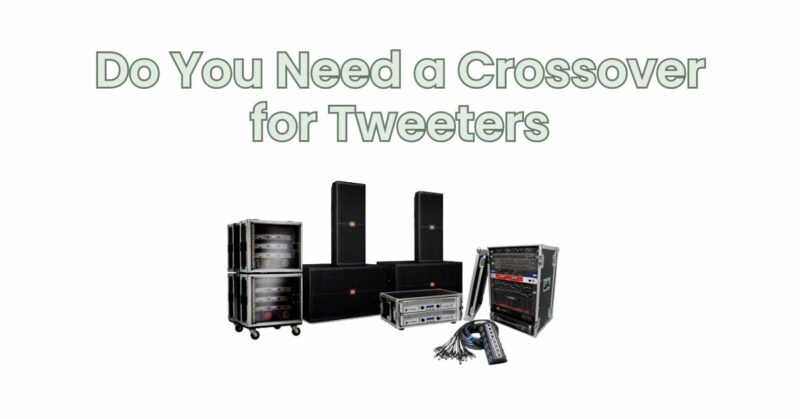Tweeters play a vital role in any audio system, as they are responsible for reproducing high-frequency sounds, adding clarity, and enhancing the overall listening experience. A crucial consideration when incorporating tweeters into your speaker setup is whether or not you need a crossover for these specialized drivers. In this article, we will explore the significance of crossovers for tweeters and why they are essential for achieving optimal high-frequency performance in your audio system.
- Understanding Crossovers: A crossover is an electronic circuit that filters and directs specific frequency ranges to different speaker drivers in a multi-driver speaker system. It ensures that each driver receives only the frequencies it can handle efficiently. Crossovers come in various types, including passive crossovers (installed between the amplifier and the speakers) and active crossovers (implemented before the amplifier, often using digital signal processing).
- Frequency Distribution: In full-range speakers, without a dedicated tweeter, a single driver handles the entire frequency spectrum. However, for improved sound quality, especially in larger speakers or component systems, multiple drivers are used, each specialized in handling a particular frequency range. Tweeters are designed to handle high frequencies, generally from around 2,000 Hz to 20,000 Hz, whereas midrange and woofers handle lower frequencies.
- Importance of Crossovers for Tweeters: Tweeters are delicate and sensitive drivers. Exposing them to low frequencies that they cannot handle can lead to distortion, damage, and reduced audio clarity. Here are some key reasons why crossovers are essential for tweeters:
- Frequency Protection: Crossovers prevent low-frequency signals from reaching tweeters, ensuring they only receive the appropriate high-frequency range. This protection avoids tweeter overload and potential damage.
- Improved Sound Quality: By directing specific frequency bands to the appropriate drivers, crossovers help maintain clarity and accuracy in audio reproduction. This leads to a more balanced sound with distinct highs, mids, and lows.
- Enhanced Efficiency: Each driver works optimally within its designated frequency range, maximizing the overall efficiency of the speaker system.
- Types of Crossovers for Tweeters: Depending on your speaker system, you may use either passive or active crossovers for tweeters:
- Passive Crossovers: Passive crossovers are common in most component speaker systems and are installed between the amplifier and the speakers. They are easy to set up and require no external power source.
- Active Crossovers: Active crossovers are more flexible and precise. They are often used in advanced audio setups and require a separate power source. Active crossovers allow for detailed adjustments of crossover points, slopes, and equalization.
Incorporating tweeters into your speaker system adds a new dimension of high-frequency clarity and precision to your audio experience. To ensure the tweeters perform optimally and to protect them from low-frequency signals that could cause distortion or damage, a crossover is a fundamental requirement. Whether you choose passive or active crossovers depends on your audio setup and preferences. By implementing a suitable crossover for your tweeters, you can achieve an immersive and well-balanced sound with crisp highs, smooth mids, and powerful lows, creating a truly enjoyable listening experience.


